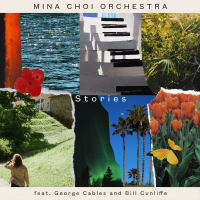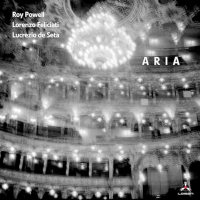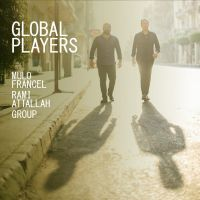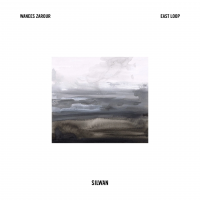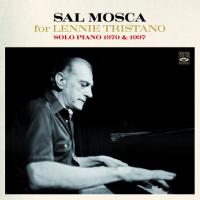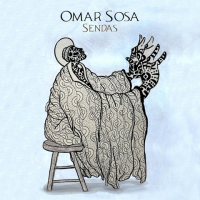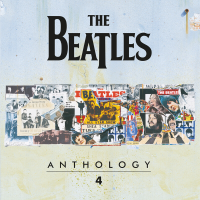Home » Jazz Articles » Extended Analysis » : Various Artists: Benin Yoruba Music - Voices Of Memory
: Various Artists: Benin Yoruba Music - Voices Of Memory
 Various Artists
Various ArtistsBenin Yoruba Music: Voices Of Memory
Ocora
2011
In the days before the web shrank the world, hearing traditional music made in a distant country meant getting on a plane and going there yourself. Rewarding, but expensive. Plan B involved checking the catalogues of two record companies, Ocora, based in France, and Folkways, based in the US, who specialized in field recordings from all over the globe. Sometimes, the music you wanted was there, for these two august institutions had—and continue to have—huge archives.
Folkways, founded by Moses Asch in 1948, had released over 2,000 albums by 1987, when, following Asch's death, it was acquired by the Smithsonian, which continues to curate it. Ocora, founded by Pierre Schaeffer in 1955, has a relatively modest archive of around 600 albums. Neither label would likely be around today if they did not have well resourced patrons: the Smithsonian for Folkways and Radio France for Ocora.
Core consumers of Ocora and Folkways recordings were, and presumably still are, university enthnomusicology departments, and the labels' albums have always come with assiduously researched liner notes. Like those in the 98-page booklet accompanying Ocora's Benin Yoruba Music: Voices Of Memory, these may look daunting to non-academics, but, with the motto "no pain, no gain" in mind, are worth persevering with. The copious photos taken by the recording teams, many in color and taking up a whole page, are more immediately engaging.
The Yoruba people are found in several West African countries, but mostly in Nigeria, where they are the biggest ethnic group in the south western region. They are also the most numerous group in parts of Benin, which borders Nigeria to its west. Traditional Nigerian Yoruba music has been well documented on record. Beninese Yoruba music less so. Which makes Benin Yoruba Music: Voices Of Memory a valuable addition to Ocora's catalogue.
A 2-CD set, Benin Yoruba Music: Voices Of Memory comprises 30 tracks ranging in length from 0:28 to 13:16 minutes. A few of the singers and musicians are semi-professional quasi-griots, but most are amateurs, recorded in their home villages during social or ritual gatherings. The recordings were made in 1958, 1969 and 1996-99. Dozens of different drums, percussion, aerophones and cordophones are heard, in lineups ranging from trios to larger ensembles.
Of the two discs, the second is the most appealing. There are just eight tracks (compared with 22 on the first disc), and so they are longer, averaging around seven minutes. The extended playing times allow the cross-rhythms and counter-melodies which characterize Yoruba music to shine more fully, as—much like in a baton relay race—the various instruments take turns to "lead" the ensemble. At times, you can hear where Nigerian Afrobeat originator Fela Kuti found part of his inspiration, or juju stars such as King Sunny Ade and Ebenezer Obey found theirs, at others you can imagine you are in Cuba, where much traditional music stems from Yoruba roots.
As noted above, the liner notes, by Madeleine Leclair (translated into English by Jeffrey Grice), are academically pitched but worth penetrating. They illuminate the social contexts and historical backgrounds of the recordings, adding to the listening experience.
As Plan Bs go, Benin Yoruba Music: Voices Of Memory is a good one.
Tracks: CD1: Song of praise to Sanponna; Sung dance of novices of Sanponna and Orisa Agbaji; Game in the moonlight 1 & 2; You look at death, you know her 1 & 2; Look carefully at a situation to understand it well 1 & 2; The sparrowhawk does not war with fire to perish by fire; We fought against the divinity, but our struggle was in vain; Dawn of Naa Buuku; We dancers of gbaja; When Ajapa will call me; Tuntula; Oto; Waya 1 & 2; Ogu 1 & 2; Evening; Gelede; 1 & 2. CD2: Ago; Toba; Tulu; Akoto; Agbaja; Ago; Jenjele; Toba.
Personnel: Various lineups: drums, flutes, percussion, clapping, xylophones, harps, bows, vocals.
Photo Credit Marga Buitendijk
Tags
PREVIOUS / NEXT
Support All About Jazz
 All About Jazz has been a pillar of jazz since 1995, championing it as an art form and, more importantly, supporting the musicians who make it. Our enduring commitment has made "AAJ" one of the most culturally important websites of its kind, read by hundreds of thousands of fans, musicians and industry figures every month.
All About Jazz has been a pillar of jazz since 1995, championing it as an art form and, more importantly, supporting the musicians who make it. Our enduring commitment has made "AAJ" one of the most culturally important websites of its kind, read by hundreds of thousands of fans, musicians and industry figures every month.












